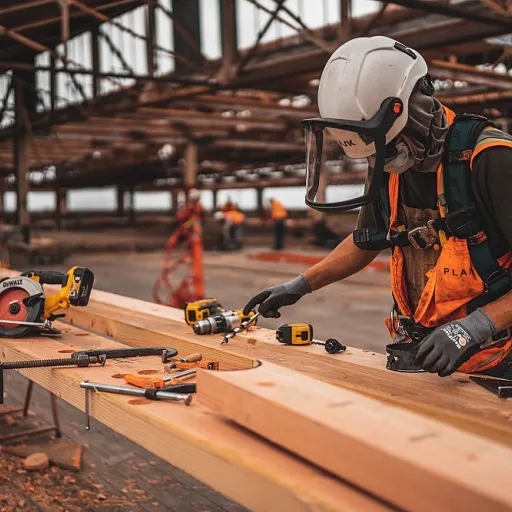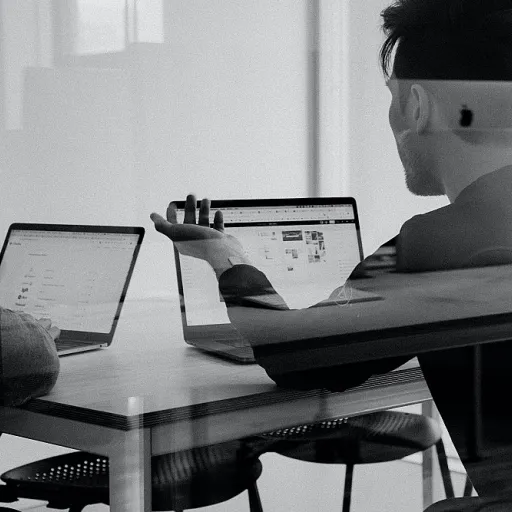
Understanding Hip Pain in the Workplace
Common Causes of Hip Discomfort in Office Settings
In today's corporate environment, many of us spend long periods seated, often without realizing the potential impact on our hip health. It's common for office workers to experience hip pain due to a combination of improper chair design, lack of movement, and poor posture. These factors can lead to increased pressure on the hips, causing discomfort and pain over time.
The strain of sitting long hours in an office chair not designed for the body's natural contours can lead to significant health issues. This includes reduced circulation, pressure on the wrong areas, and long-term pain. People often overlook the role that inadequate seating plays in exacerbating hip issues. An ergonomic office chair is crucial for maintaining hip comfort as it provides the proper support needed to mitigate these problems.
When considering a product for hip pain relief, it's vital to understand not just the chair itself but also how ergonomic office furniture can help. Adjustments such as tilt tension and seat height are crucial components in creating a workspace that promotes good posture and alleviates strain. For more insights on how to enhance your workspace and integrate ergonomic solutions, further exploration into these options is beneficial.
Taking measures to reduce stress on the hips not only improves immediate comfort but also ensures better health in the long term. It's essential to regularly reassess your seating arrangements to prevent future hip discomfort and improve overall office well-being.
The Role of Ergonomic Chairs
The Significance of Ergonomics in Alleviating Discomfort
An office setting often demands prolonged periods of sitting, which can inadvertently lead to hip pain and related issues. This necessitates the importance of integrating ergonomic principles into the workplace, particularly through the selection of suitable chairs. An office chair that is ergonomically designed can greatly contribute to reducing hip strain and enhance overall health and productivity.
Ergonomic chairs are crafted to support the body’s natural posture, promoting good posture and reducing pressure on the hips and knees. Key features such as adjustable seat height, sufficient lumbar support, and tilt tension adjustment play crucial roles in minimizing discomfort. These adjustments help align the hips and spine correctly, ensuring that office workers maintain good posture over long periods.
Chairs designed with deep seat depth and suitable back support help distribute the body's weight effectively, which can alleviate long-term strain on the hips. Additionally, proper knee and hip alignment is maintained, ensuring better circulation and less tension in the lower back and hips.
If you are looking to enhance the comfort of your office space with chairs that not only support your back but also complement your interior decor, consider exploring options like elegant wood and leather desk chairs, which offer both ergonomic support and aesthetic appeal.
Key Features of an Ergonomic Chair for Hip Pain
Essential Characteristics of Ergonomic Chairs
Choosing the perfect chair for managing hip pain involves understanding the key features that contribute to optimal support and comfort for those spending long periods at a desk. An ergonomic office chair is not merely a seat; it is a tool designed to promote good posture and reduce various discomforts associated with prolonged sitting, including pressure on the hips.
One primary aspect to consider is the adjustment capabilities. Seats with adjustable height and depth allow users to align their knees at the right angle, reducing strain and improving blood circulation. An adequately adjusted seat ensures that your feet rest flat on the floor, maintaining the natural curve of your spine, supported by an adjustable lumbar support. This type of support is crucial in preventing long-term health issues related to poor posture.
The tilt tension and recline adjustment are essential, allowing you to change your posture during different periods of work. These chair features help minimize static pressure in hips and enhance comfort for extended durations. Additionally, breathable material and padding in the chair contribute to a cushiony yet firm seat that maintains support throughout the day.
To truly benefit from these ergonomic solutions, choosing the best office chair for your workplace is crucial. With technological advancements and thoughtful design, an ergonomic chair can transform how you experience work, providing relief and promoting well-being in everyday activities.
Choosing the Right Chair for Your Office
Finding the Perfect Balance: A Guide to Selecting the Ideal Office Chair
Selecting the right office chair is crucial for ensuring comfort, especially when dealing with hip pain issues. The right chair can make a significant difference in maintaining good posture and reducing hip strain, helping you stay productive over long periods. First, consider the adjustability of the chair. The product should allow for height and tilt tension adjustment, ensuring that your feet rest flat on the floor while your knees maintain a 90-degree angle. This helps in reducing pressure on the hips and promoting proper circulation. Look for chairs offering excellent lumbar support. A chair designed with this feature helps in maintaining the natural curve of your spine, thus minimizing stress on the hips. Such support ergonomic features are essential for reducing pain and encouraging good sitting posture over long-term periods. Additionally, pay attention to seat depth and width. A well-designed ergonomic office chair should have enough depth to support your thighs comfortably, with a space of one to two inches between the back of your knees and the seat. This aspect of seat adjustment is critical in alleviating pressure points and facilitating better posture. Lastly, the material of the chair matters too. Opt for a breathable fabric that molds well to your body, providing both support and comfort over long periods. This attention to detail can significantly decrease strain and enhance overall health while working. By taking all these factors into account, you can find the best office chair that suits your individual needs, ultimately providing relief and support for those experiencing hip pain.Implementing Ergonomic Solutions in the Workplace
Integrating Ergonomic Chairs into Your Workspace
Implementing ergonomic solutions in the workplace involves more than just acquiring an ergonomic chair. It is a comprehensive approach that acknowledges the long-term benefits of good posture and correct support for your hips and back. To effectively implement these solutions, consider the following strategies:- Assess Your Current Workspace: Before introducing ergonomic office chairs, evaluate the existing setup. Identify areas causing the most strain or discomfort, such as improper seat height or inadequate lumbar support.
- Select Chairs Designed for Health: Choose products that specifically address hip pain and posture problems. Opt for chairs that offer features like tilt tension adjustment, adjustable seat depth, and proper lumbar support to reduce strain.
- Educate Employees: Provide training on the importance of maintaining good posture and how ergonomic chairs can help alleviate pressure and improve circulation when sitting over long periods.
- Encourage Regular Movement: While ergonomic chairs are essential, encourage employees to take breaks and move regularly to mitigate the effects of sitting long periods.
- Monitor and Adjust: After the introduction of ergonomic office chairs, monitor their usage and address any employee feedback on discomfort or additional pressure points.













